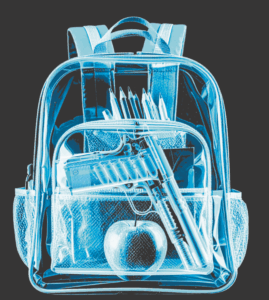
State gives glimpse into what schools could look like this fall
It is not yet known what schools will look like in the fall, but the North Carolina Department of Health and Human Services is preparing for the possibility of having to drastically transform public educational environments should threats from COVID-19 remain at the end of the summer.
Officials submitted a list of “example strategies” for state school officials and legislators to consider May 14 that, if they were implemented, would change both the physical setup of classrooms and the way students go about the school day.
The first approach explored calls for an increase in social distancing within school facilities.
Desks would be reconfigured so students are six feet apart during instruction, “density limiting actions” would include staggering school hours, reducing class sizes and alternating days and/or weeks when particular groups of students would be in school.
Group activities would be limited. Recess times would be “staggered.” Meals would be taken by students from the cafeteria back to classrooms and students would not be allowed to linger when they arrive at — or are dismissed from — school.
But increased social distancing measures are only the beginning.
“Hygiene protocols” would also be put into place to reduce the risk of COVID-19 outbreaks within given schools.
Surfaces would be disinfected more frequently, hand sanitizer would be placed at the entrance and exit of every classroom, schools would be required to refill cleaning supplies and toiletries more frequently and bathroom and handwashing breaks would be incorporated into instruction.
Cloth face coverings would even be recommended for students and staff “as appropriate,” the document reads.
But before students and staff would be welcomed into these transformed environments, they would be subjected to “daily symptom screening … at the school entrance.”
School nurses and other health professionals would conduct those screenings — in full personal protective equipment — and accommodations would have to be made for “high-risk” staff and students. Each district would also be required to have a plan for dealing with students or staff who develop symptoms during the school day.

Just how many of these measures, if any, will be implemented this fall remains to be seen, as DHHS was quick to note that its presentation, which can be seen in full by clicking here, is “pre-decisional” and, for the time being, only for “discussion purposes.”
But the document seemingly validates concerns voiced by Wayne County Public Schools Superintendent Dr. Michael Dunsmore last week about the potential need to cut staff to balance a budget with a projected $5 million deficit.
“If we have to split up classes because of social distancing, we are going to need more staff, not less,” he said May 11 during the School Board’s budget work session. “We cannot just pull that our of mid-air.”
Dunsmore is expected to present the board with his budget recommendations this evening. The meeting, which will begin after the board’s 3:30 closed session, can be viewed on the WCPS Facebook page.

A loaded discussion

Fighting for their lives

Goldsboro loses a giant

“I’m a flippin’ hurricane!”
Public Notices — Dec. 14, 2025

Belting it out

Legendary

Final Four!


